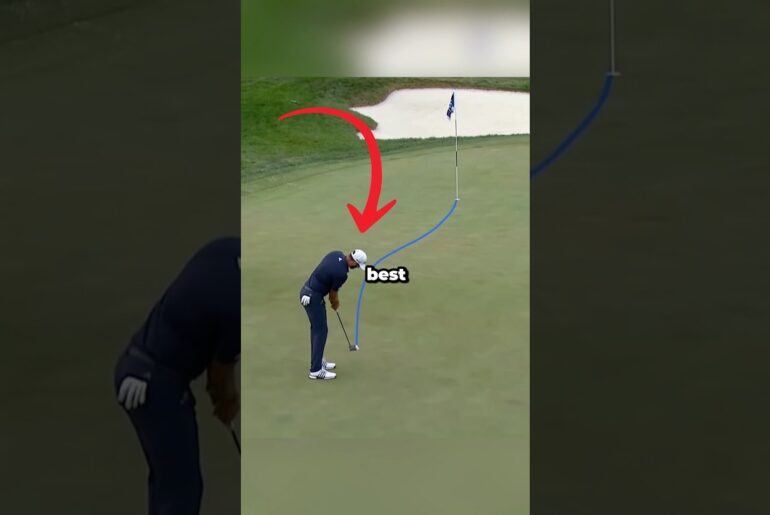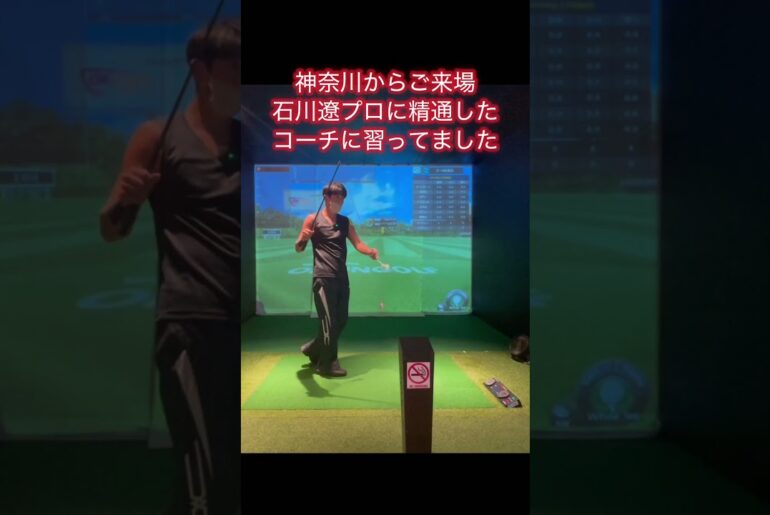FA coach developers Ian Parkes and Matt Jones share their tips for coaching finishing.
Learn more about finishing: https://learn.englandfootball.com/articles/resources/2022/What-is-finishing-in-football?q=finishing
Find out about the different finishing techniques: https://learn.englandfootball.com/articles/resources/2022/Different-finishing-techniques-in-football?q=finishing
Subscribe to England Football Learning: http://www.bit.ly/FALearningSub
Visit our website: http://www.learn.englandfootball.com
Follow us on Twitter: http://www.twitter.com/EnglandLearning
IAN: I think the other thing is we have to understand, as we talked about earlier, IAN: the younger ones, they’re less likely to finish first time. IAN: They love the ball, they want to stay on the ball, IAN: they probably need to get closer to the goal to score,
IAN: whereas older ones will be able to shoot from further away IAN: because they’re more powerful, as we talked about, IAN: and they’re probably more likely to get an assist. MATT: It’s also a mindset thing for the coach. MATT: So, I’ll be careful when I say this, because you’re right,
MATT: health and safety is important, so I’ll come on to that, MATT: but a coach needs to embrace the chaos. MATT: Let’s be honest, especially if you work with 5v5, 7v7, under 7s MATT: up to under 10s, it is organised chaos, isn’t it?
MATT: It’s like bees around honey, we’ve got to be able to MATT: embrace that a little bit and learn to cope with it as adults, MATT: which I think we sometimes struggle with. MATT: So I think that’s one thing, it’s okay for it to be chaotic,
MATT: but in the shooting world, a good finishing session for me MATT: should have lots of opportunities to shoot MATT: and Parkesy just talked through some really good examples MATT: of how you might do that linked to your environment.
MATT: But I think about if you’ve got players in a practice who are waiting MATT: from a health and safety point of view, don’t stick them next to the goal. MATT: You see a lot of players lent up against the goal MATT: waiting to come on as maybe a defender.
MATT: Well that’s a big no-no MATT: because if your shooting is anything like mine, you know, MATT: 7 out of 10 of them will probably miss and that’s an unofficial stat by the way. MATT: But the last thing you want to do is take a shot and hit a team-mate.
MATT: So as the coach thinks, right, where am I positioning MATT: the waiting player, or we prefer the term resting player because MATT: they’re resting for a reason so that when they come on they can play to their maximum MATT: and they’re also resting and going, ah I’m looking.
MATT: So when a lot of coaches do finishing sessions, MATT: especially if they’re working lower on the spectrum of we want high repetition, MATT: there might be an element of you’re just going to wait there MATT: you’re going to have a go in a second
MATT: so just make sure they’re waiting in an appropriate place but also MATT: they feel engaged so you might set some little MATT: you’re waiting there for five seconds MATT: in that five seconds what can you learn about your mate MATT: so you might give that feedback to your mate.
MATT: What do you like about his shooting? MATT: What what maybe one bit of advice have you got? MATT: But the final thing I’d say on it is have some fun with it so, MATT: Parkesy and I were talking about what games would we like to take part in
MATT: as young players but I’m 39 I still want to be motivated, MATT: I still want to enjoy and have fun MATT: and we’re talking about the spirit of football at the moment. MATT: And there’s one game I worked on an FA initiative a few years ago
MATT: and it wasn’t my game that I created, MATT: but a good coach of thief so I pinched it MATT: and it’s called five goals, five ways so MATT: five of my mates will play five of Parkesy’s mates MATT: we’re going to play a game who can score
MATT: a left, right, header, volley, nutmeg the quickest MATT: and when we score it we’re going to run over to the whiteboard MATT: and if I’ve scored the left foot I’m going to sign Matt Jones MATT: because let’s be honest who doesn’t like to work on their autograph and
MATT: then as that’s happening Parksey can retrieve the ball and try and attack MATT: and momentarily we’re down to four players so it’s a 5v4 overload for him MATT: underload for me. MATT: But it’s the thrill of trying to score five goals quicker than the other team
MATT: but also your name goes up in lights MATT: and there’s so many things you can do with that MATT: you could change the five goals, the players could pick the goals, you could allow MATT: whoever sets up a goal to put a signature as well.
MATT: So two players go off, I set up a mate so we both sign it so it’s a 5v3. MATT: So I think have fun with it and MATT: make sure that you’re you’re putting on practices that you would want to take part in MATT: as a player yourself.
IAN: I think the other thing is you have to what we have to understand IAN: we talked about earlier, IAN: the younger ones they’re less likely to finish first time. IAN: They love the ball, they want to stay on the ball, IAN: they probably need to get closer to the goal to score.
IAN: Whereas older ones will be able to shoot from further away IAN: because they’re more powerful, as we talked about. IAN: And they’re probably more likely to get an assist to finish IAN: off a first time finish or less touches. IAN: So age and stage, that would be where I’d go.
IAN: Recognise that younger ones need to get close to the goal, IAN: they’re probably going to have more touches in the lead up. IAN: Older ones, less touches to finish because again back to stats, IAN: what is it 60% of goals are scored first time finish I think
IAN: and again 80% of goals are scored by an assist or with an assist so IAN: at that end of the game we need the practice to look like that IAN: but recognise that younger’s we don’t want them to be finishing first time because IAN: that’s not necessarily what they want
IAN: but get close to the goal use the penalty area as a reference point. MATT: Yeah and just add to that so if we go through that process of MATT: younger players need to manage their body before they can manage the ball, MATT: manage the ball, manage the decision.
MATT: So build up the layers of complexity so with younger players you might start with it MATT: was mentioned earlier around make the facility work for you, MATT: see the opportunity the facility has, MATT: so you might have eight little groups of pairs taking it in turns,
MATT: shooting into a goal, a target, MATT: who doesn’t like to knock a coconut off when you go to the funfair. MATT: So you’re giving them that target to shoot, high repetition, MATT: lots of opportunities to have a go.
MATT: You’re not shooting in front of your mates, which again I think is a big MATT: put off for some players when they are in those long lines and MATT: all eyes are on them and nine of their peers are watching them and MATT: they shoot and they miss, God forbid,
MATT: they’re only seven years old for a bit of context on that one MATT: but even a 14 year old would be crushed if they missed a shot MATT: in a training environment in front of their mates MATT: because they’re never going to live it down.
MATT: So I think we have that duty to protect them a little bit MATT: in the way that we structure our practices. MATT: But then you might move it on to lots of 1v1s, lots of 2v2s, MATT: make the small numbers work for you, don’t feel that you’ve got to,
MATT: I’m going to steal one of Pete Sturges lines now, MATT: don’t rush them to the wrong finish line of giving them the 11v11 game MATT: before they’re ready for it. MATT: That said, the challenge every coach has got is MATT: kids want to play games
MATT: so go back to the game I gave earlier the five goals, five ways MATT: think about smart and creative ways that might structure the session MATT: so Parksey mentioned the stats there about MATT: shooting from close range, from middle distances, from long distances
MATT: you might have some really good scoring and reward systems of, MATT: okay well tonight because we know that the younger players can’t shoot from distance, MATT: we’re going to reward as close to the goal, MATT: you’re going to get five points for a goal and
MATT: try and take as many touches as you want, shoot when you’re ready. MATT: So we’re encouraging them to shoot on their terms as opposed to MATT: asking them to shoot one touch from distance MATT: which they’re not physically or technically tactically capable of yet MATT: and I don’t mean to pigeonhole players
MATT: and then you might flip it on its head as you work with older players MATT: they’re used to more interference, opposition, MATT: they’re used to shooting from bigger distances, they’ve got more physical capacity MATT: so yeah I think it’s just understanding that age and stage of your players and
MATT: making sure your practices meet their needs but without MATT: robbing them of the game which is MATT: us versus them, let’s enjoy the spirit of it. IAN: I think the competition is really important. IAN: Even if you do have little groups that we’ve talked about doing finishing,
IAN: you can still make that competitive, IAN: which team is going to score 10 first, IAN: and do it that way if you can’t get them into a game. IAN: A couple more things that you made me think of actually. IAN: One was it might be unopposed at the younger ages,
IAN: so building confidence. IAN: It’s okay to have 1v the goalkeeper. IAN: If we go straight to 1v1s and we’re working on finishing and IAN: they can’t get round that player IAN: then they never get a chance to take the shot.
IAN: So it’s understanding that but then at the other end of the scale or the age IAN: is we talked earlier about underloaded. IAN: So at the top end we know that just take the front three playing IAN: against the back four you’re underloaded
IAN: and so if you scale that back how often do we do practices where IAN: finishing has to take place when you’ve got less than the opposition IAN: so just when your players are ready for that and it might mean less success
IAN: but if we never give them that opportunity come to a match day IAN: and we can’t understand why we can’t score. IAN: We did it great in training, but in training it was either matched up IAN: or we had more and now today
IAN: we’ve got less and no wonder we can’t do it. IAN: So there’s just a couple of things I added to it. MATT: I think a good tip for the coach to be able to sell that to the player. MATT: So let’s say you’re playing 11v11
MATT: and the team you’re coaching with is playing goalkeeper 4-2-3-1, MATT: so they’ve got a lone centre forward and they’re playing against a back four. MATT: So that’s four plus one unit for unit if you’re with me. MATT: If you include the goalkeeper that’s 5v1.
MATT: Now in games, and there’s a number of different contributing factors to this MATT: but just go with me for a second is MATT: in games the striker might have got frustrated MATT: that they’re not getting the ball much, MATT: when they do they’re not getting their shots off because they’re heavily outnumbered.
MATT: But if in training we’re putting on practices MATT: where that centre forward has three mates and they’re playing against one defender, MATT: we’re almost setting that player up to fail MATT: because we’re not exposing them to the environment.
MATT: So I think we have to make sure that when we’re explaining it to players, MATT: this is why we’re doing it tonight, MATT: we’re going to play you tonight, you’re going to play a 1v1, MATT: then you’re going to play a 1v2, so you’re going to go up against two,
MATT: then you’re going to play a 1v3. MATT: They might look at you and go, why are you setting me up to fail? MATT: Well actually, we’re testing your resilience because on a game day, MATT: how many defenders would they have? Oh, they’d have four, coach.
MATT: Right, and how many is the review? There’s one. MATT: Now I know we need your mates to come and support you MATT: and we’re going to work on that MATT: but you also need to get your head around there’s going to be times in the game
MATT: when you are outnumbered so let’s get good at dealing with that and MATT: we know that it’s one of the hardest things to replicate isn’t it MATT: the match day environment at a training field MATT: because when you’re playing in front of, whether it’s one man and his dog
MATT: or younger age groups, you’re playing in front of your parents, MATT: your mates’ parents, that’s a very difficult thing to deal with psychologically. MATT: So I think try and recreate that in your training where you can. MATT: Let’s sometimes invite some of the parents closer to it,
MATT: especially those younger age groups. MATT: Let’s not push them away, let’s invite them in, MATT: involve them a little bit, make sure that the messages that they’re MATT: giving to their sons and daughters pre, during and post-game MATT: are supportive around some of that psychological development of
MATT: it’s okay for them to shoot and miss, MATT: actually the fact they were in a good position praise that for us. MATT: So I think yes there’s some subtle education there MATT: certainly with the younger age groups MATT: and MATT: some parents who mean well of course they do
MATT: but maybe need a little bit of support around how they’re helping their players MATT: post, during and pre-game. IAN: For me, keep the score and keep a time on games. IAN: So if you add the element of competition,
IAN: if it’s a four minute game and we’re keeping the score and there’s a minute left. IAN: You can guarantee when in Futsal world this is, I would shout out, IAN: because it’s a stop clock in Futsal, IAN: so we might play a four-minute game, but the last 30 seconds
IAN: I might shout out as a stopped clock to 30 seconds, so every time it goes out. IAN: And you can guarantee in that 30 seconds there is always a goal IAN: when just as a coach you have to hype it up and go 30, 29 IAN: no it lifts automatically
IAN: and it will go it and someone have a chance and they’ll miss and oh IAN: quick down the other end IAN: and it just creates that element of this matters scoring now matters IAN: which is really the only way you can practice being composed
IAN: is when it matters and you’re trying to be composed when it matters. IAN: So keep score, play to short games and IAN: if you play short games you get that every three minutes, IAN: whereas if you play a ten minute game
IAN: you don’t get it to the last 30 seconds of a ten minute game.







